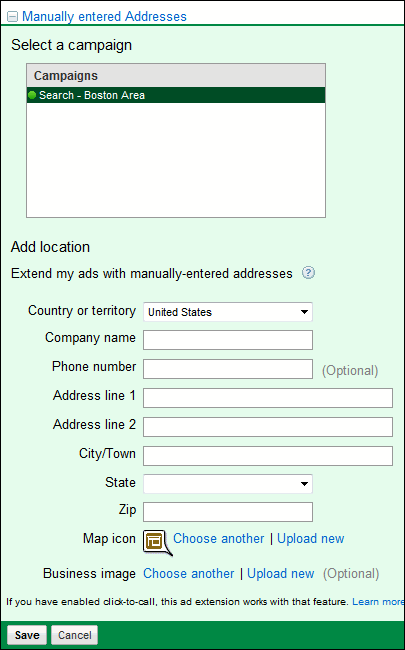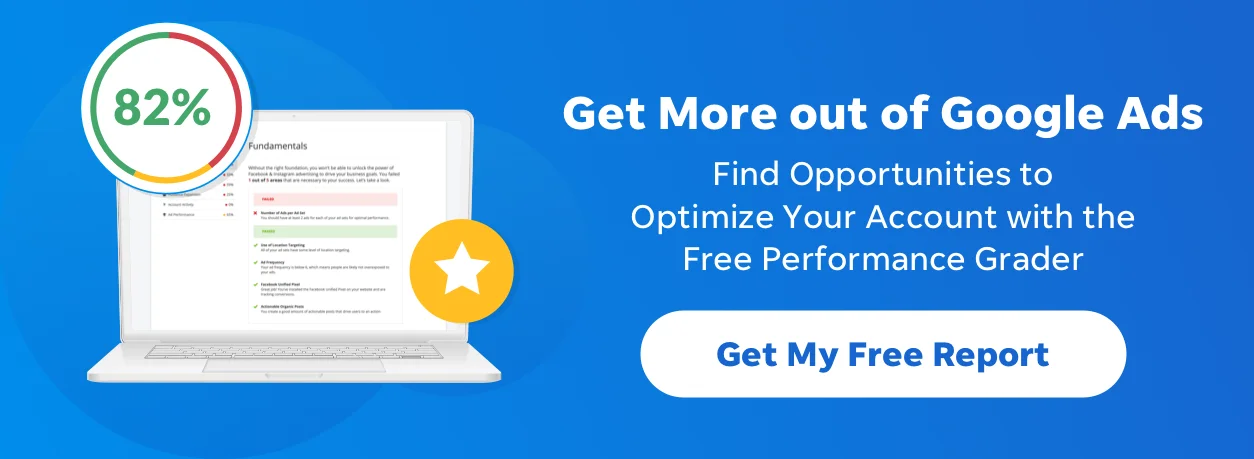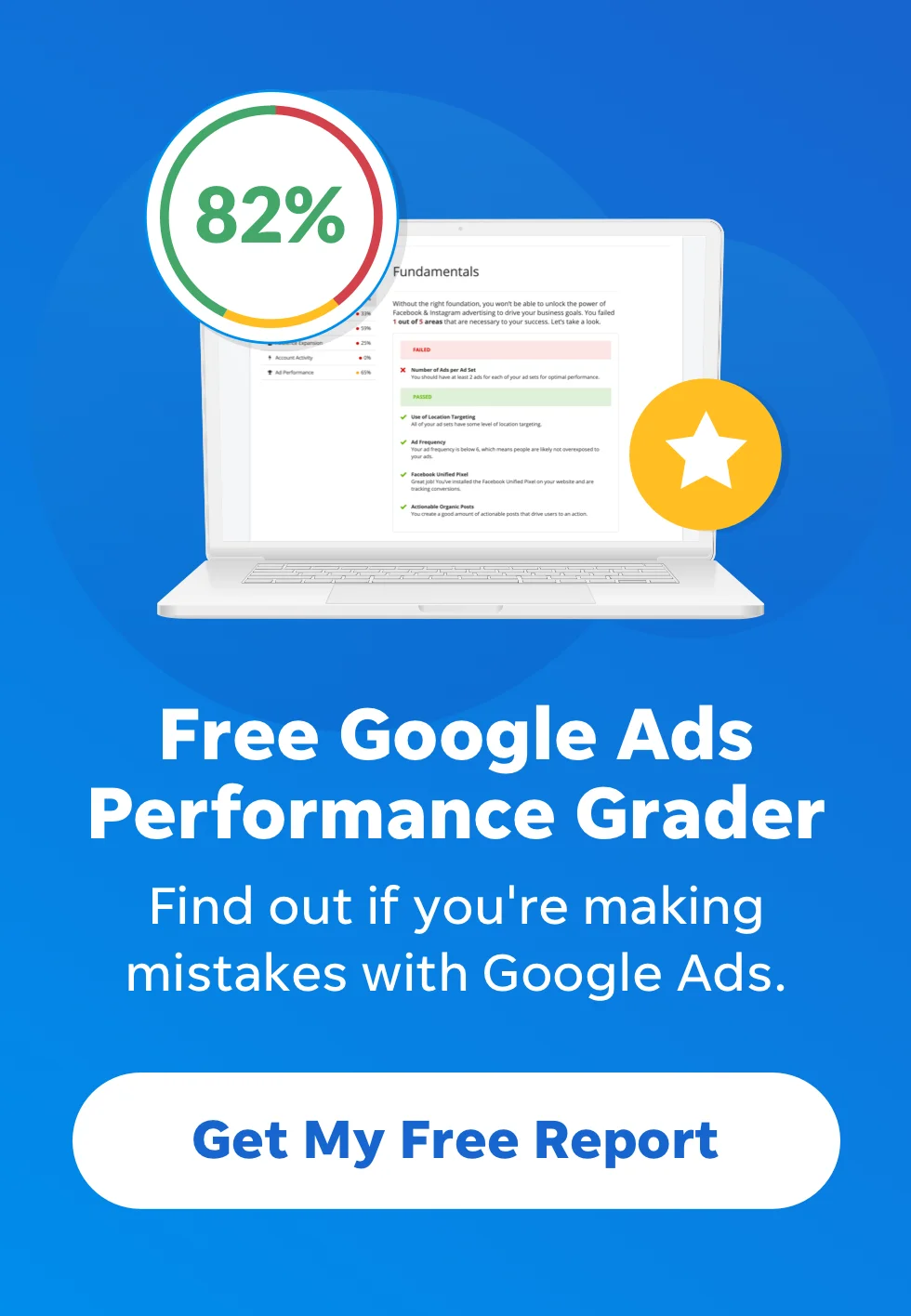
Google Ads Location Extensions Guide: Location Extension Targeting Best Practices
The first post in our series on Google Ads Extensions will focus on Google Ads (AdWords) location extensions. Location extensions are a feature within Google Ads that allows you to add location data about your business to your ad:
In this post we’ll walk through why these extensions are important, how you can use them in your account, and when to use the extensions as well as how best to apply them.
Why Are Google Ads Location Extensions Important?
Location extensions allow you to get more real estate on the SERP and provide more information to local searchers, including a clickable phone number on mobile devices. Given that AdWords location targeting is probably more aggressive than you think, this is a pretty powerful option. Marissa Mayer noted recently that roughly 20 percent of the searches on Google are for local information and roughly 40 percent of mobile searches are after local info. That’s a large swath of potential searchers, and there are a number of local businesses for whom getting additional real estate in a search result and getting easier access to a connection with potential customers is important.
How Can I Use Google Ads Location Extensions?
Location extensions are relatively quick and easy to set up. You create location extensions at the campaign level, and you can create them by pulling from a Google places account or by creating a new listing:
Syncing your Google Places account is easy enough as you’ll be pulling already entered information about your business, and even starting from scratch with a location extension is a fairly painless process:
Once you’ve set up your location extensions, you’ll start to see data around specific extensions:
Getting too fancy with your company name or address can get you into trouble, but the one area you do have some flexibility is with the map icon and business image. Choose something clickable and consistent with your branding and landing page experiences (just like with any ad element) and you can have a better-performing location extension. The reporting here is nice because you can test different favicons and business images, if you have enough local volume in a given campaign to justify it.
When Should I Use Google Ads Location Extensions?
Location extensions are useful in a variety of different types of campaigns – if there’s a chance your ads may show in local queries, it’s likely worth the very short amount of time it takes to set up location extensions for your local online marketing efforts.
That said people frequently have questions about how location extensions apply to different types of campaigns, such as:
Google Ads Location Extensions & Mobile Campaigns
The Google Ads click-to-call functionality means that on mobile display ads you can frequently have your number displayed in a “clickable” format so a searcher can quickly connect with your company. This point of differentiation between mobile campaigns and campaigns targeted at desktops and laptops is a good example of the need for businesses getting a lot of mobile traffic via AdWords to split out mobile traffic to lower CPCs and CPAs.
Google Ads Location Extensions & Content Network Campaigns
There are instances where content network ads will show location extension information, so it’s worth monitoring this data as well.
Google Ads Location Extensions & Campaigns for Multiple Addresses
So what if you have a chain or cluster of stores you’re promoting? This is where some of the location targeting functionality gets pretty interesting: in these instances you want to start to map your campaign strategy to how you can use location extensions (again – this is assuming you are drawing a sufficient amount of local traffic to justify this type of restructuring – you need to prioritize how you construct campaigns based on the levers that will have the biggest impact on your ROI, be they geographic, temporal, budget-related, etc.)
You can include up to four locations per campaign, so if you’re including four different locations you want to make sure each location matches all of the keyword targeting set up in that campaign.
For instance if you have a campaign aimed at four different locations in reasonably close proximity of one another, make sure that all of the offers, specials, and products you’re including in your ad copy and keyword lists apply to all four, because Google will return what they deem to be the most relevant location for a given search. You should also consider how interchangeable these stores and locations and their messaging is – again if the volume and return for your work makes sense, there may be instances where you would be better off breaking out different locations into their own campaigns with keywords and ad text that better fit that location and product set (i.e., maybe your chain restaurant is actually a little pricey in a low-income area but is actually considered very affordable for a higher end neighborhood – even if they’re located nearby geographically, you might be well-served to create separate messaging for each area, depending on how much additional effort this would be to your business and how much extra return you can expect).
While in some instances enabling location extensions across a large and complicated campaign can require some strategy and leg work, in most instances if a campaign receives a significant amount of local search volume enabling the feature is well worth it.
The next frequently worthwhile feature from the Google Ads Extension family we’ll cover will be product extensions – stay tuned!
(Additional Reading: Google Image Extensions Guide)
Meet The Author
Tom Demers
Tom Demers is Co-Founder & Managing Partner at Measured SEM and Cornerstone Content.
See other posts by Tom Demers
More Articles Like This
Comments
Please read our Comment Policy before commenting.









